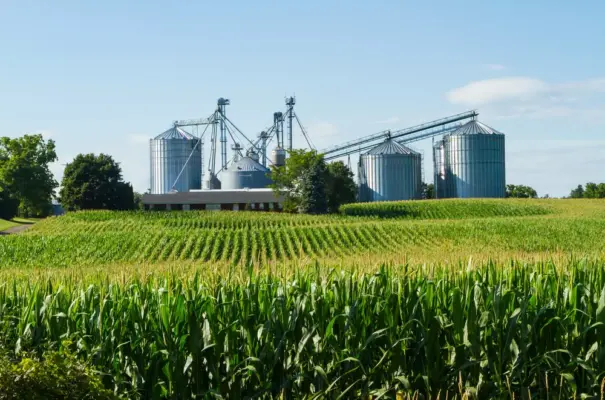Grain storage is a key element in the agribusiness landscape, playing a fundamental role in the sector’s logistics and competitiveness. When we look at the Brazilian scenario, we notice a recurring problem in our country: the storage deficit.
Regarding expectations, the projected grain production for the 2023/2024 harvest is 306.37 million tons (Conab), a 4.25% decrease compared to the 2022/2023 harvest, when Brazilian production reached a record 319.83 million tons. See Table 1: even with the drop, the storage deficit remains significant.
Table 1 | Volume and annual variation of Brazilian grain production.
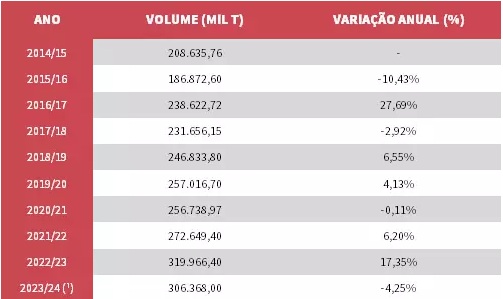
¹ Conab projection (January/2024). Source: Conab / Prepared by Scot Consultoria.
Currently, Brazil has a static storage capacity of 204.27 million tons (Conab), which is equivalent to 66.68% of the estimated production. Only 16.43% of this static capacity is located on farms (33.56 million tons).
Table 2 | On-farm static capacity, in tons, and its share of total capacity.
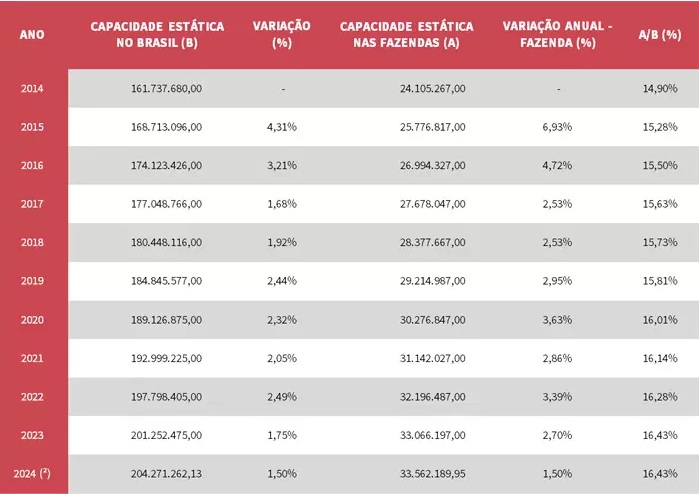
² Projection considering a 1.5% growth in static capacity from 2023 to 2024. Source: Conab / Prepared by Scot Consultoria.
Advantages of on-farm storage for producers
Having on-farm storage space can be highly beneficial for both crop and livestock producers. The lack of such space sometimes leads to lost commercial opportunities, greater exposure to the volatility of the road freight market, and logistical challenges, especially during the peak harvest season. All of this occurs due to factors such as the mismatch between grain-producing and consuming regions, in addition to the difference in harvest and demand periods.
For the farmer, an on-farm storage structure offers benefits such as:
- Autonomy in sales management: allowing the producer to choose the ideal moment to sell their production, based on future price analyses, and thus avoiding the natural market pressures during harvest season;
- Reduction in transportation costs: by not needing to transport during harvest months, the producer can avoid the “rush,” a period when most of the production is being moved and transportation price volatility is higher;
- Improved grain quality: by avoiding open-air exposure and protecting it from climatic variations);
- Efficiency: by eliminating time lost waiting in lines at storage, collection, or intermediary units);
- Improved standardization: due to a controlled environment regarding humidity, damaged grains, and impurities.
For the livestock producer, particularly the feedlot operator, storing grains can also be a smart strategy. Having the ability to store grains on their property gives the producer the power to choose the most opportune times to purchase their inputs.
Thus, the livestock producer gains extra protection against market fluctuations, which can make a big difference in their profitability.
As an example, we will consider Farm A, without grain storage infrastructure, and Farm B, with the necessary infrastructure for such storage. Both farms operate with a full cycle and finish Creole males in feedlots. Located in Rondonópolis/MT, the two farms will confine 1,000 cattle for finishing in April.
Farm A, lacking storage infrastructure to begin feedlot operations in April, purchased corn in January 2024 for delivery in February of the same year. The acquisition price for the input was R$ 47.50 on January 12, 2024 (Scot Consultoria).
Meanwhile, at Farm B, with storage capability, the producer outlined their strategy at the beginning of the crop year (July-June 2023) and, taking advantage of the significant low prices from the 2022/2023 grain harvest, purchased their corn for R$ 36.00 on July 12, 2023 (Scot Consultoria).
Figure 1 illustrates the variation in corn prices over the last year.
Figure 1 | Corn price variation in the Rondonópolis – MT region.
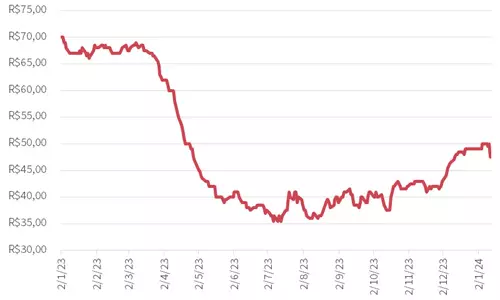
To demonstrate the impact of the storage strategy on the operation’s profitability, we will establish a scenario where all other variables will be similar for both farms (diet, operational cost, feed efficiency, etc.), considering only the difference in corn acquisition cost. For this purpose, a standard inclusion of 70% corn in the diet of confined cattle was established.
For Farm B, we will establish a daily diet cost of R 11.38 per head (the average diet cost in the state of Mato Grosso according to Confina Brasil 2023 data), with corn purchased at R 36.00. In contrast, the diet cost for Farm A, considering only the difference in corn purchased at R 47.50, would be R 13.93 per head/day.
Based on a 100-day feedlot period and considering a herd of 1,000 cattle, Farm B would achieve savings of R$ 255,000.00 compared to Farm A, solely attributable to the ability to purchase the input during a more favorable window. See Table 3.
Table 3 | Comparison of Farm A (without storage infrastructure) vs. Farm B (with storage infrastructure).
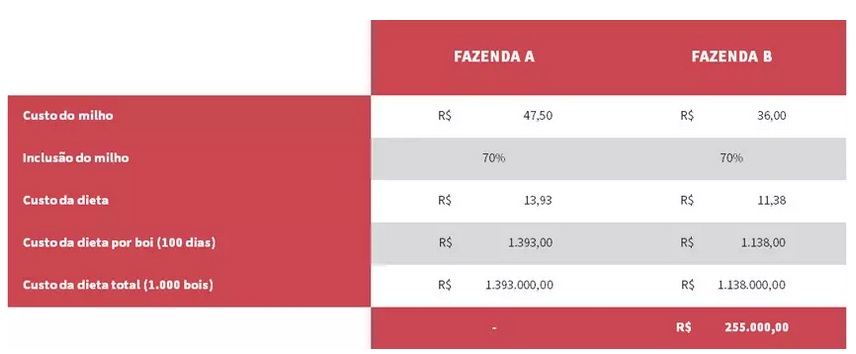
Source: Scot Consultoria
In an ever-evolving, increasingly competitive scenario with narrower margins, grain storage is a strategic element that can offer advantages and enhance the profitability of the operation.
Thus, this tool can and should be considered by producers looking to eliminate bottlenecks and implement more intelligent management of their financial resources.
